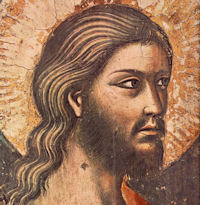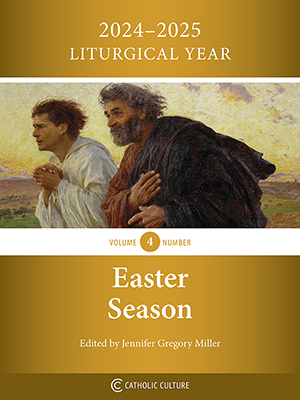Advent: December 20th
Saturday of the Third Week of Advent
Other Commemorations: St. Dominic of Silos, Abbot (RM); St. Zephyrinus, Pope and Martyr (RM) ; Other Titles: Day 4 O Antiphons: O Clavis David (O Key of David)
» Enjoy our Liturgical Seasons series of e-books!
In the General Roman Calendar, this date is a weekday in Advent. No feast of a saint is celebrated. The readings lead us to prepare for Christmas when Christ's first coming to us is remembered and to direct our mind and heart to await Christ's Second Coming at the end of time. Advent is thus a period for devout and joyful expectation.
Today is the fourth of the O Antiphons, the seven jewels of our liturgy, dating back to the fourth century, one for each day until Christmas Eve. These antiphons address Christ with seven magnificent Messianic titles, based on the Old Testament prophecies and types of Christ. The Church recalls the variety of the ills of man before the coming of the Redeemer.
St. Dominic of Silos
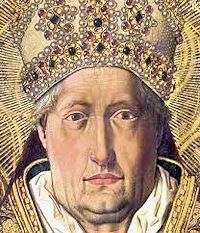 St. Dominic of Silos was defender of the faith. Born in Canas, Navarre, Spain, circa 1000, he entered the Benedictines at San Millan de Ia Cogolla. King Garcia III of Navarre challenged him when he became abbot of the monastery, and Dominic refused to surrender part of the Benedictine lands to the crown. For this he was exiled, going to King Ferdinand I of Castile and Leon, who made him abbot of St. Sebastian Abbey at Silos, now called St. Dominic's.
St. Dominic of Silos was defender of the faith. Born in Canas, Navarre, Spain, circa 1000, he entered the Benedictines at San Millan de Ia Cogolla. King Garcia III of Navarre challenged him when he became abbot of the monastery, and Dominic refused to surrender part of the Benedictine lands to the crown. For this he was exiled, going to King Ferdinand I of Castile and Leon, who made him abbot of St. Sebastian Abbey at Silos, now called St. Dominic's.
Dominic reformed the abbey, built the cloisters in Romanesque style, and started a scriptorium that became famous throughout the region. One of the most beloved saints in Spain, Dominic also rescued Christian slaves from the Moors.
Dominic's shrine is noted for its place in the birth of Dominic de Guzman, the founder of the Order of Preachers. Dominic de Guzman's mother begged for a child there. Dominic was also noted for miracles of healing.
—Excerpted from Evangelizo.org 2001-2014
Patronage: against hydrophobia; against insects; against mad dogs; against rabies; captives; pregnant women; prisoners; shepherds
Symbols and Representation: abbot surrounded by the Seven Virtues; chains, referring to prisoners and slaves; mitered abbot enthroned with a book, a veil tied to his crozier
Highlights and Things to Do:
- Read more about St. Dominic of Silos:
- Read about the connection about St. Dominic and the hounds to St. Dominic of Silos.
- See his depiction of Saint Dominic of Silos enthroned as a Bishop by Bartolome Bermejo.
- If St. Dominic's name is familiar, it might be because of the "Chant" album by the Benedictine Monks of Santo Domingo de Silos album. It peaked as Number 3 on the Billboard charts in 1994. Read how Gregorian Chant is the voice of the Church.
St. Zephyrinus
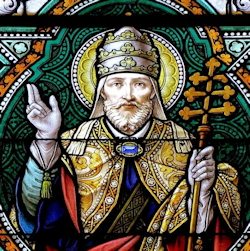 Commodus, looked favorably on the Christians at the onset of his reign. His son Caracalla had been raised by a Christian nurse, and the emperor himself had been cured of some ailment by a Christian. However, Severus later reversed his position toward the Christians, probably due to their unpopularity with the Roman pagans, and he issued a decree forbidding any person to become either a Jew or a Christian. The persecution commenced once again.
Commodus, looked favorably on the Christians at the onset of his reign. His son Caracalla had been raised by a Christian nurse, and the emperor himself had been cured of some ailment by a Christian. However, Severus later reversed his position toward the Christians, probably due to their unpopularity with the Roman pagans, and he issued a decree forbidding any person to become either a Jew or a Christian. The persecution commenced once again.
Zephyrinus was a Roman and the son of Habundius. Some sources indicate that his strength did not lie in leadership, but that he depended greatly on the more capable and practiced Calixtus, who, since his release from the labor mines, had been rehabilitated and devoted himself to the Church. Consequently, he was appointed archdeacon. Not only did he direct the lower clergy for Zephyrinus but he was also entrusted with the administration of the official cemetery which the Church now owned.
Heresy stormed the Church from all sides, but Zephyrinus adhered firmly to the doctrine set forth by the apostles. The excommunicated tanner Theodotus continued to teach that Christ was not the true Son of God. He had even gone so far as to set up his own church and place a paid bishop in residence. This bishop, called Natalius, had previously been tortured for confessing the true faith. According to legend, angels were sent to Natalius in visions to rebuke him for joining Theodotus, since Jesus did not want anyone who had suffered for Him to be cast out of the Church. Natalius appeared to have seen the light; he threw himself upon the mercy of Zephyrinus and begged to be pardoned. Natalius was readmitted to communion by the bishop of Rome after considerable penance.
Zephyrinus decreed that all ordinations, even those of mere clerics, be performed before the assembled clergy and laity.
Another heresy, called Modalism, taught by Praxeas, Noetus, and Sabellius, was brought to the attention of Zephyrinus. Followers of this theory obliterated the distinctions between the entities of the Trinity. Zephyrinus immediately condemned this, again citing the original teachings of the apostles.
Zephyrinus was said to have been martyred and was buried in his own cemetery on the Appian Way.
—Excerpted from The Popes: A Papal History, J.V. Bartlett
Symbols and Representation: Monstrance; triple cross
Highlights and Things to Do:
- Read more about St. Zephyrinus:
- Pray this prayer for the feast of St. Zephyrinus.
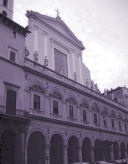
Ember Friday of Advent
Station ad Santi Dodici Apostoli, also Santi Apostoli (Station at the Twelve Holy Apostles):
The stational church for today's Mass is the church of the Twelve Apostles in Rome. Mary is the apostle of the liturgy, the Mediatrix of all grace. She is the root from which springs the full bloom, Christ. "And of His fullness we all have received, and grace for grace" (John 1:16). It was erected by Julius I (337-352) over the barracks of ancient Rome's firemen and entrusted since 1463 to the Conventual Franciscans. Originally dedicated to the Apostles St. James and St. Philip, it was rededicated to all the Apostles in the 16th century. It is currently in the care of Conventual Franciscans.
For more on Santi Dodici Apostoli, see:
For further information on the Station Churches, see The Stational Church.


